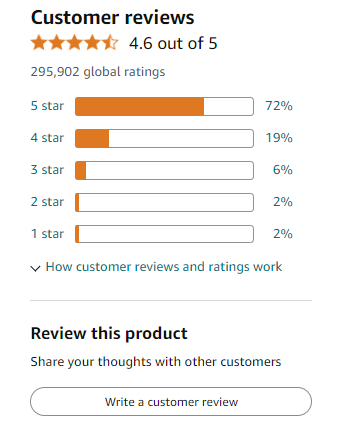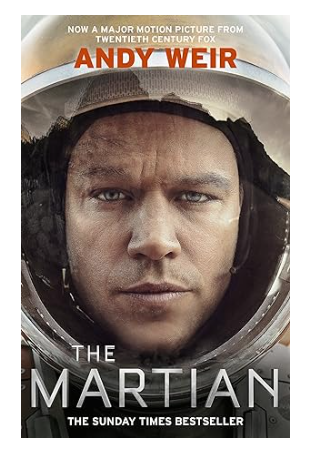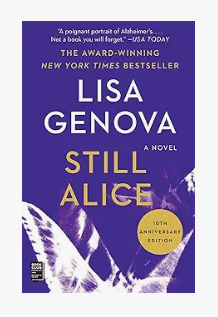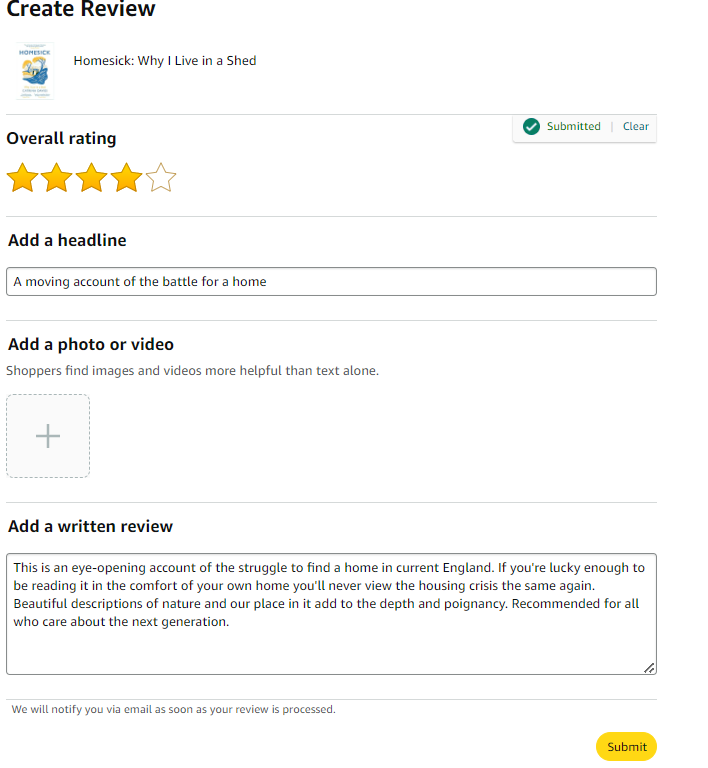READER POWER: IT’S A THING
I have published two trip fiction novels: Dunster’s Calling and More Or Less Annie. However, I’m not talking about my books today. The titles are mentioned because apparently you have to do that if you want friendly algorithms to recognize you. More about algorithms later. Today I’m talking about YOU talking about my books, or any other books you care about. Because YOU talking about books carries more weight than authors talking about books. Yep. You read that right. YOU, The Reader, hold more power in deciding what gets published than you realise. Reader Power is definitely a thing. I’m thinking about making tee-shirts. But I’m getting ahead of myself…
ALGORITHMS FOR DUMMIES
In this age of algorithms, what you see online is based very much on the input you provide. Input on social media, on the big retail sites, and during your internet searches. Word of mouth is still a wonderful resource for authors but let’s face it, algorithms rule the waves with regards to buying and selling pretty much anything.
What’s an algorithm? You’ll have to ask someone else for the details because I failed my maths ‘O’ Level. The short answer is it’s a set of rules used to make calculations. For our purposes, algorithms show you books similar to ones you’ve already purchased, or books that other readers who purchased your book also bought. Every time you search for a book, or purchase a book, or review a book, that book gets more data added to its profile. More data means more people see that book, which leads to more sales, which leads to more reviews, and … you get the drift.
ARE YOU AN EMPOWERED READER?
Hey, you in the back row. Wake up. The worst is over. I received much higher ‘O’ Level grades in English so you’re back on safer ground. Anyway, the idea for this blog came from a conversation with a friend who was frustrated about the kinds of books she saw in bricks-and-mortar shops, online, and on best seller lists. She asked, ‘Why aren’t there more of the books I like out there?’ I replied, ‘Do you review the books you enjoy?’ She said, ‘no’. Which brings up the question: Is there a connection between her frustrations and her actions? Can Reader Power really influence publishers and authors?
Let’s find out:
- Do you read book reviews on sites like Amazon, Waterstones, Barnes and Noble, or Goodreads?
- Have you made book purchasing or borrowing decisions based on those reviews?
- Have you ever posted a book review online?
- True or False: you can only post a review on Amazon if you purchase your book there.
- Yes/No/don’t know: Can you review a book through your library system?
If you answered yes, yes, yes, false, don’t know (because most librarians have struggled to answer this question), you can flick back to your FB page or feed the cat. You are already empowered. However, if your answers are sometimes, sometimes, no, true, don’t know (yep, that one stays the same), it may help you to hang around if you’d like to be an Empowered Reader. With awesome Reader Power. And possibly a tee-shirt.
READER POWER SUCCESS STORIES
Here are a few examples of how readers welded their Reader Power to influence publishing history:
The Martian: Andy Weir 
This novel is about a space mission to Mars that goes wrong and an astronaut who gets left behind. Literary agents had turned down Andy Weir’s work in the past, so he published The Martian on his website, one chapter at a time, for free. Readers began talking about it online and asked if he could make the complete story easier to access. So, Mr Weir made an Amazon Kindle version available.
The Kindle edition rose to the top of Amazon’s list of best-selling science-fiction titles, selling 35,000 copies in three months. This got the attention of publishers and Weir sold the print rights to Crown for over US$100,000. The book currently has over a million ratings on Goodreads. By now, if you were one of the book agents who turned this author’s work down, you would be forgiven for hurling your cornflakes across the kitchen.
There’s more. The film version, starring Matt Damon, became the 10th-highest-grossing film of the year. It made $630 million worldwide and gained seven Oscar nominations. More cornflake-hurling probably ensued but Reader Power proved its point and then some.
Still Alice: Lisa Genova 
Still Alice is another example of Reader Power. Ms Genova wrote this novel about Alice, a 50-year-old high-powered psychologist at Harvard who is diagnosed with early-onset Alzheimer’s. Lisa queried it to agents but was told no one would read a book about Alzheimer’s. Agents turned her away, even though she had the backing of the Alzheimer’s Association in the USA.
Not to be thwarted, Ms Genova self-published the book. And guess what? People WILL read a book about Alzheimer’s. The book did so well, Simon and Schuster acquired it. It was on The New York Times best seller list for more than 59 weeks. There are over 2.6 million copies in print, translated into 37 languages. Julianne Moore won an Academy Award for Best Actress in the film adaptation.
What drove Still Alice to success? Well, the nearly 350,000 star ratings on Goodreads didn’t hurt. Not bad, for a story they said no one would read.
Reader Power Failure
In contrast to the successes above, I recently read a delightful book. I won’t name it for obvious reasons, but it was one of my favourites of the past year. The subject matter should have appealed to many more readers than a book about Alzheimer’s. The book was traditionally published, unlike the above two examples which were initially self-published. Many of the big names reviewed it: London Review Book Shop, The Guardian, BBC Radio Four, and more. However, as I write this, it has about 30 Amazon reviews.
Obviously, a successful book usually needs a great story, but besides that, it’s not the publishing deal that drives a book. Ultimately, it’s the reader’s response. How do we know the reader had a response? The reader has to say something, somewhere, to someone. They need to review in some way. It’s engaged, active readers that drive sales success which leads to more books by that author.
MORE MATHS? REALLY?
Yes, because I’m still trying to make amends for that ‘O’ Level result. A quick (unscientific, I know!) search online suggests over 90% of customers check online reviews before buying. Here are a few findings that Business Insider discovered when analysing Amazon reviews: An item (any item, books included) with one review is 65% more likely to sell than an item with no reviews. One-third of consumers won’t buy a product that doesn’t have any reviews. Amazon reviews are trusted more than any other type of review, because there’s no financial gain in it for the reviewer. The reviewer can be honest, unlike a reviewer who has to keep advertisers, subscribers, or editors happy. On average, positive reviews increase sales by 20%.
So, reviews are good. But there’s a problem. Remember my friend who didn’t review books yet complained she didn’t see more of her favourite books? It seems she’s not alone. Here’s a disturbing figure if you’re an author, or anyone trying to sell anything: only 0.3% to 1.5% of buyers leave a review. Rule of thumb is only one in a hundred will leave a review.
WHY DON’T MORE READERS REVIEW?
In talking to readers I find the main reason for not reviewing seems to be that readers think reviewing is a complicated process. Some believe the successful authors they like don’t need their feedback. Others assume they have to write a complex dissertation on characters and plot.
Let me counter those views: Firstly, it’s not complicated to leave a review. It takes seconds and if you have the skills to order from any online retailer, you easily have the skills to review on those sites. Secondly, successful authors only remain successful due to the support of their readers. Thirdly, you certainly don’t have to write much in your review if you don’t want to. You can, in fact, just provide a star rating. Leaving a rating means you click on the number of stars you award the book. Leaving a review means you provide the number of stars AND write a few words about what you enjoyed or didn’t enjoy about the book. Both simple ratings and reviews drive the algorithms.
If you’ve read this far, you’ve learned reviews are important for authors and are easy to do. So, how and where should you say something in order to boost the books you love? There are techie ways of doing that and non-techie ways. Some ways cost you the price of the book and some ways don’t.
AMAZON: FRIEND OR FOE?
No matter where you purchased or borrowed your book, reviews on the big hitter sites like Amazon, Waterstones, and Goodreads (owned by Amazon) help authors. Let me just say something here about Amazon. Many knock it but it’s a huge part of our book world. I hear people say they won’t buy from Amazon, they buy from Abe Books instead. Well, guess who owns Abe Books? Some say they don’t look at Amazon reviews, they look at LibraryThing. Well, guess who LibraryThing gets much of its data from? In the USA, the UK, and Canada, Amazon accounts for around 66% of book sales. Many independent authors rely on Amazon for sales as they can’t get into bricks-and-mortar stores. I search for books in many online and physical environments. However, my reviews on Amazon, which includes Goodreads, are likely to be the most beneficial to the author.
Remember the question about do you have to purchase the book on Amazon to review on Amazon? The answer is no. You can borrow from the library, find your book at a jumble sale, or buy at an independent store, and still write a review on Amazon (as long as you spent at least £40 there over the last 12 months). The only difference is ‘verified’ versus ‘unverified’ reviews. If you purchase the book on Amazon, your review will show ‘verified purchase’ next to it. If you find that book in grandma’s attic, your review won’t say it’s verified, but it will still help that book battle upstream in the algorithms. You can also review on Waterstones without purchasing there. Goodreads is a powerful tool for helping an author gain traction in the marketing world. You can review on one site, or copy and paste your review to multiple sites.
HOW TO POST A REVIEW
Here’s a screenshot of my recent review of Catrina Davies’ book, Homesick: Why I Live in a Shed.
Goodreads suggests the following definitions for star ratings: 1 star – didn’t like it. 2 stars – it was OK. 3 stars – liked it. 4 stars – really liked it. 5 stars – it was amazing. I’ll be honest here: I don’t leave 1- or 2-star reviews. I won’t finish a book that’s not working for me as life is too short. I won’t review a book I didn’t finish but you can do as you see fit in this matter.
For adding reviews or ratings, most sites work in a similar way. Open your account on your online retailer’s page. Search for the book you’d like to review and click on it. You’ll see a ‘write a review’ button. You can add just a star rating or write a few words. Click on ‘submit’. The retailer may display your review live almost instantly, or it may take a few hours to show up. If you read your book on an eReader, you’ll often see an option to star rate the book when you finish the last page. Click on the star rating you like and submit. That’s it. You have empowered yourself as a reader and you have empowered your favourite authors. Well done!
According to Amazon my reviews have been viewed 28,000 times. I use my Reader Power to push for more books I enjoy reading. Through reviews I also support and encourage authors in their future endeavours. I know your favourite authors would welcome your support too, so here are some ideas:
STATEGIES THAT HELP AUTHORS FOR FREE
- Post a review
- Share comments on social media
- Join an author’s email list (You can find mine here at traceygemmell.com)
- Order from your local library – if enough people do this, the library will purchase more copies.
- Recommend books to your book club.
- Help your favourite author build their professional network. Someone I ‘met’ on social media promoted me to several radio stations, including BBC Radio Somerset.
- Tell your local book shop/gift shop owner about the book. For example, promote your favourite knitting book to the wool shop in your town. Any shop can set up an Ingram Spark account for free and order books at, typically, 50% off RRP. The book has little competition in that shop so can attract the right reader.
- Suggest authors for presentations at your local organizations/libraries/schools.
STRATEGIES THAT COST A LITTLE MONEY
- Buy the book at regular price – that 99-pence book may cost the author money!
- Pre-order the book before publication day – this drives the algorithms, builds momentum, and proves better for promotion than any other time.
- Purchase that book you love as gifts for friends. You had to get something for their birthday anyway, right? So even if you borrowed your copy from the library, your purchased gift gave the author a little pocket money – and hopefully another review!
If you want to see more of the kinds of books you love, get involved. Empower yourself and your favourite author. Post a review. I may be an author, but I take my responsibilities as a reader just as seriously. I want more of the books I love to read so I’d be smart to let authors and publishers know what those books are. I’ve had lovely social media interactions with Kate Mosse, Deborah Lawrence, Matt Haig, Damian Barr, Joanna Cannon, Catriona Ward, Jennie Godfrey, to name a few, all because I reviewed and/or commented on their books. Try it yourself, because Reader Power is definitely a thing.
(Ahem. If you have read Dunster’s Calling or More or Less Annie, I humbly and gratefully ask for your feedback. Not begging. Well, maybe just a little. Thank you.)





